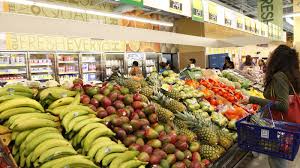The World Food Programme (WFP) and the Food and Agriculture Organisation (FAO) say in the next four months, conflict, COVID-19 and the climate crisis are likely to increase hunger in 23 countries.
Ms Eri Kaneko, the Associate Spokesperson for the Secretary-General, António Guterres said this while briefing correspondents at the UN headquarters on Friday in New York, on a new report released by the two UN agencies.
Kaneko said Ethiopia and Madagascar were the world’s newest “highest alert” hunger hotspots, according to the report.
“The highest alert list also includes South Sudan, Yemen, and northern Nigeria. In some areas of these countries, significant numbers of people are at risk of falling into famine.
“The report flags other countries where life-threatening hunger is on the rise. They include Afghanistan, Burkina Faso, the Central African Republic, Colombia, the Democratic Republic of the Congo, Haiti, Honduras, Sudan, and Syria,’’ she said.
According to her, WFP and FAO say humanitarian action is urgently needed to prevent hunger, famine and death in all 23 hotspots.
In a statement, the UN agencies warned that efforts to fight a global surge in acute food insecurity were being stymied in several countries by fighting and blockades that cut off life-saving aid to families on the brink of famine.
“Bureaucratic obstacles as well as a lack of funding also hamper the two UN agencies’ efforts to provide emergency food assistance and enable farmers to plant at scale and at the right time.
“This is of grave concern as conflict, the economic repercussions of COVID-19 and the climate crisis are expected to drive higher levels of acute food insecurity in 23 hunger hotspots over the next four month.,’’ it stated.
FAO and WFP have already warned that 41 million people were at risk of falling into famine unless they received immediate food and livelihood assistance.
“2020 saw 155 million people facing acute food insecurity at Crisis or worse levels in 55 countries, and according to the Global Report on Food Crises, an increase of more than 20 million from 2019 – and the trend is only expected to worsen this year.
“The vast majority of those on the verge are farmers. Alongside food assistance, we must do all we can to help them resume food production themselves, so that families and communities can move back towards self-sufficiency and not just depend on aid to survive,” said FAO Director-General QU Dongyu.
“That’s difficult without access, and without adequate funding – and so far, support to agriculture as key means of preventing widespread famine remains largely overlooked by donors, unfortunately.
“Without such support to agriculture, humanitarian needs will keep skyrocketing, that’s inevitable.
“Families that rely on humanitarian assistance to survive are hanging by a thread. When we cannot reach them that thread is cut, and the consequences are nothing short of catastrophic,” warned David Beasley, WFP Executive Director.
The report highlights that conflict, climate extremes and economic shocks – often related to the economic fallout of COVID-19 – will likely remain primary drivers of acute food insecurity for the August-November 2021 period.
It said transboundary threats was an aggravating factor in some regions, in particular, desert locust infestations in the Horn of Africa and African migratory locust in Southern Africa require continued monitoring and vigilance.
It said humanitarian access constraints was another severe aggravating factor that hamper efforts to curb food crises and prevent starvation, death and a total collapse of livelihoods, increasing the risk of famine.
“Countries currently facing most significant obstacles preventing aid from reaching those who need it most include Afghanistan, Ethiopia, the Central African Republic, Mali, Nigeria, South Sudan, Somalia, Syria and Yemen.
“The road to Zero Hunger isn’t paved with conflict, checkpoints and red tape.
“Humanitarian access isn’t some abstract concept – it means authorities approving paperwork in time so that food can be moved swiftly.
“It means checkpoints allow trucks to pass and reach their destination, it means humanitarian responders are not targeted, so they are able to carry out their life- and livelihood-saving work,” Beasley said.




